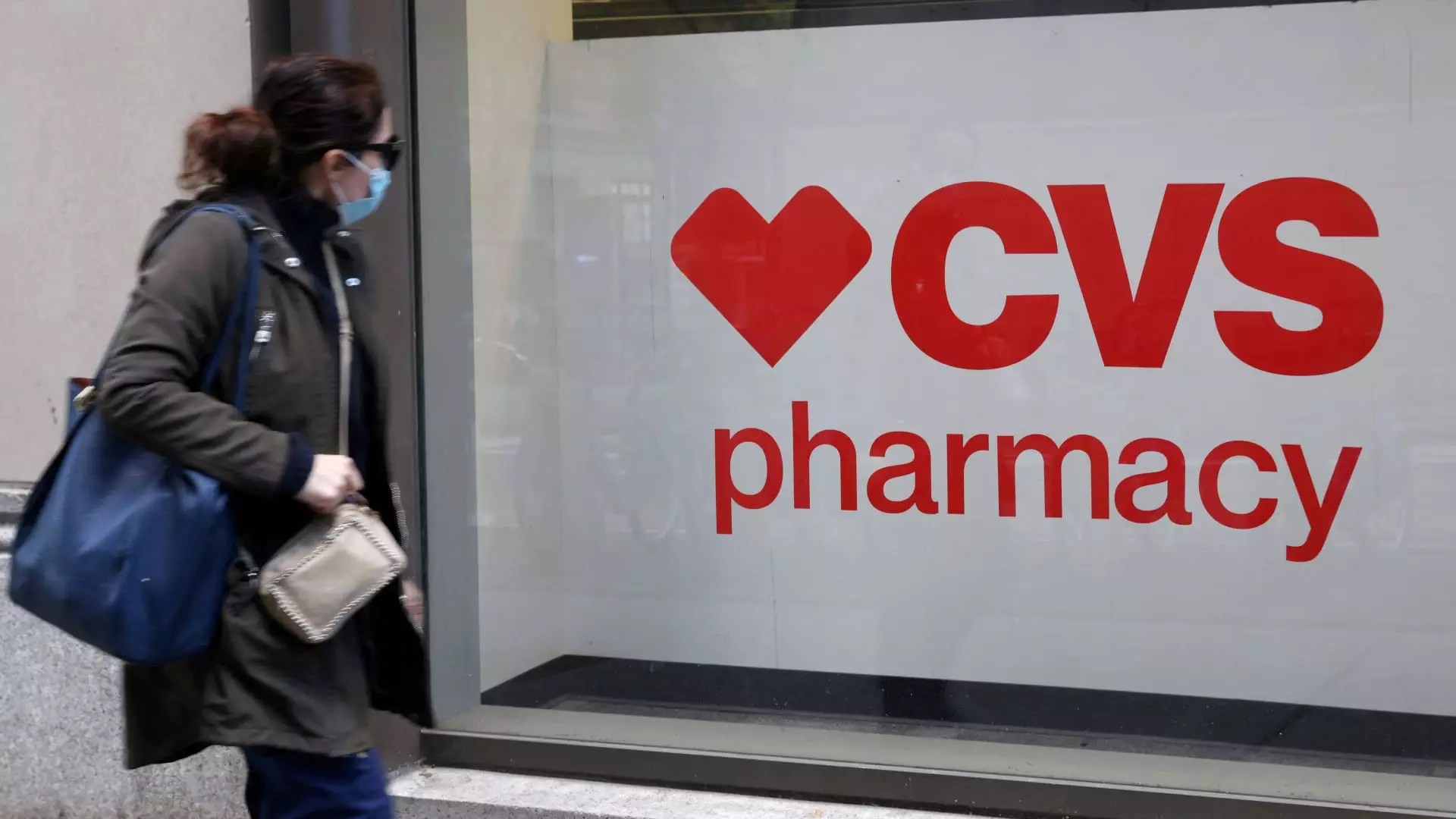The latest financial statements from CVS Health reveal a corporation grappling with significant challenges. The third-quarter results exhibited a mixture of positive and negative indicators, marking CEO David Joyner’s initial foray into managing the complex dynamics of the company. With rising medical costs causing a strain on profit margins, the outlook for CVS remains fraught with uncertainty.
CVS Health has acknowledged that escalated medical costs will likely continue to affect its operational performance moving forward. A spokesperson indicated that the company is refraining from providing a formal outlook, reflecting the hesitation and caution that permeate the organization. This is not just a simple situation of over-budgeting; it’s a pain point linked to various factors including delayed healthcare services during the COVID-19 pandemic. Patients, especially seniors, are now returning to hospitals for procedures that were postponed, hence increasing the burden on Aetna, CVS’s health insurance division.
CEO David Joyner highlighted the importance of establishing trust with investors, emphasizing that any forward guidance provided should be realistic. This represents a shift in strategy and philosophy for the leadership team as they seek to regain the faith of Wall Street, which has been eroded following three consecutive quarters of guidance reductions. CVS’s stock price has plummeted by nearly 27% this year, creating an urgent need for revitalization and transparency.
The appointment of Steve Nelson as the new president of Aetna signals a critical move for CVS as it attempts to navigate through choppy waters. Nelson, who previously held a high-ranking position at UnitedHealthcare, brings valuable experience that could help stabilize CVS’s insurance business. Joyner’s strategy also includes restructuring initiatives, as evidenced by the ongoing review that resulted in the closure of multiple retail locations and layoffs.
The recent announcement of additional closings—271 stores in total—illustrates a broader strategy aimed at streamlining operations and controlling costs. The company is also implementing a plan to cut $2 billion in expenses over the coming years, emphasizing that strategic trimming is vital for long-term stability. Such restructuring efforts are not mere reactions to financial stress; they reflect a strategic pivot to ensure survival in an increasingly competitive healthcare landscape.
When examining the financial results, CVS reported revenue growth of 6.3% year-over-year, totaling $95.43 billion, which marks a commendable rise attributed largely to its pharmacy and insurance segments. However, the profit fallout is stark, with net income plunging to $71 million compared to $2.27 billion from the same period in the previous year. The fall in adjusted earnings per share from $1.51 expected to $1.09 actual signals a miss that raises red flags for stakeholders.
Additionally, the adjustments were burdened by substantial charges primarily stemming from premium deficiency reserves—an accounting measure signaling anticipated losses. This scenario complicates CVS’s financial picture further as it braced itself for potential future liabilities.
As CVS navigates through its current predicament, it’s essential to consider the competitive pressures at play within the pharmaceutical and health insurance industries. CVS’s insurance division reported an adjusted operating loss of $924 million in the third quarter, with a concerning medical benefit ratio that surged to 95.2%, indicating the company paid out substantially more in medical claims relative to premiums collected. Such metrics reflect an urgent need for cost containment and operational efficiency.
While the health services segment reported a decline, CVS’s retail pharmacy business illustrated resilience, pondering an upward trend due to increased prescription volume and an impressive 27.3% market share. Yet, overall, CVS needs to focus on the interplay between pricing strategies, reimbursement levels, and operational efficiency to navigate through its struggles.
CVS Health finds itself at a pivotal juncture filled with both challenges and opportunities. With a commitment to transparency and more realistic guidance, underpinned by strategic leadership changes, there is potential for recovery. However, without quick correction on rising medical costs and an effective management strategy, the firm risks further attrition in investor confidence and market share. The road ahead for CVS requires vigilance, adaptability, and a commitment to realigning its core operations with a rapidly evolving healthcare environment.

